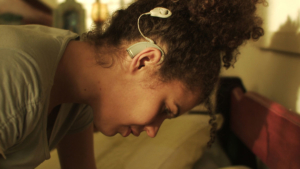TODOC Provides Affordable Cochlear Implants

A South Korean tech startup is pioneering a more affordable cochlear implant through automated production. TODOC specializes in making these implants, which use surgically installed devices to help those with severe hearing loss improve their hearing by bypassing damaged portions of the ear. Without the devices, hearing-impaired people are more likely to experience lower economic status, poorer education and more, especially in parts of the world where resources dedicated to people with disabilities are scarce.
The average cochlear implant costs more than $20,000, putting it firmly out of reach for many in the developing world. At the same time, 80% of people that could benefit from having cochlear hearing live in the developing world.
With higher rates of hearing impairment and limited resources, TODOC’s more affordable cochlear implant poses a possible solution to an issue that is costing the world billions of dollars and pushing many into isolation and poverty.
How Deafness and Hearing Loss Contribute to Poverty
Hearing loss and deafness can create numerous barriers to success, especially when those living with them do not receive sufficient support. One study published in the journal Disability and Society showed that those in the United Kingdom living with hearing impairment on average had lower household incomes, greater difficulties making ends meet, struggled more with unexpected costs and had higher jobless rates than their unimpaired counterparts.
Compared to those living in the U.K., which boasted an impressive Human Development Index of 0.932 in 2018, people with hearing difficulties are even more likely to face disability-related consequences when living in developing countries. A 2005 study published in the BMJ posited that though children with hearing issues are just as likely to see a doctor, 80% did not receive a hearing aid. As a result, children with hearing impairments on average saw their education delayed until they were more than 10 years old, putting them at a considerable disadvantage to their unimpaired peers.
Barriers to Distributing Hearing Aids and Other Treatments
Throughout the developing world, similar situations are commonplace. One study published in the International Journal of Environmental Research and Public Health demonstrated that the distribution of hearing aids to families living in proximity to Guatemala City, Guatemala significantly increased household incomes. Another study from BMC Health Services Research demonstrated that children living with disabilities in Sub-Saharan African countries faced numerous barriers, such as widespread poverty, cultural stigma and inadequate healthcare systems, to receiving diagnoses and treatments for their issues, which ultimately decreased their quality of life.
The economic consequences of unaddressed hearing impairment and the lack of affordable cochlear implants in the developing world has received wide documentation. The World Health Organization (WHO) has stated that lower- and middle-income countries have contributed 57% of the $980 billion lost to healthcare costs, educational costs, loss of productivity and societal costs stemming from unaddressed hearing impairment. The number that WHO provided excluded the exorbitant amount of money spent on hearing aids.
TODOC’s Plans to Improve Hearing For the Poor
Kyou Sik Min, who has previously worked for Samsung Electronics’s healthcare technology division and at other cochlear implant companies, started TODOC with the mission of expanding the cochlear implant market globally. To further this point, Sik Min named the company after the Korean word for the sound made when someone pats another’s shoulder “to create a company that comforts people with hearing loss by ‘patting’ the shoulders of people in difficult situations.”
The company specifically focuses on creating high-quality, affordable cochlear implants for those who could not otherwise afford them. It also creates nerve stimulation and neuromodulation devices to help researchers and help with nerve pain. To reduce costs and increase output, TODOC has developed a system to manufacture its devices using automation.
Currently, TODOC does not list a price for any of its devices. There are also questions of if and/or how the company plans to address the issue of the costs and accessibility to the surgery required to implant the devices and the therapy typically required to use cochlear implants.
At the same time, the company lists numerous innovations and improvements attached to its SULLIVAN model of affordable cochlear implants. This includes brain-machine interfacing and what the company calls “superior Neural Interface Technology,” which both have the potential to streamline the device’s implementation and use.
Looking Ahead
The company was invited to the Consumer Electronic Show in January 2022 to show its first line of implants and further advertise its products. In 2021, Min’s pitch for making a more affordable cochlear implant won the company $500,000 in funding at the Entrepreneurial World Cup Finals. Investors have also provided the company with more than millions of dollars in funding, including $3.5 million from the South Korean government.
Overall, the investments demonstrate the international community’s confidence in TODOC’s ability to deliver on its promise to bring a solution to the developing world’s hearing problems and fight inequity within the cochlear implant industry.
– Ryan Morton
Photo: Wikipedia Commons
